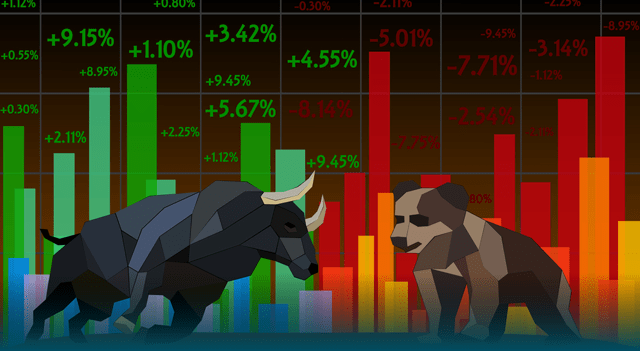Stocks turned in a strong performance throughout much of the trading day on Thursday but gave back ground in the latter part of the session. The major averages pulled back well off their highs of the session, with the Nasdaq and the S&P 500 slipping into negative territory.
The tech-heavy Nasdaq dipped 39.69 points or 0.2 percent to 17,516.43 and the S&P 500 (SPI:SP500) edged down 0.22 points or less than a tenth of a percent to 5,591.96, while the Dow managed to remain in positive territory, climbing 243.63 points or 0.6 percent to a new record closing high of 41,335.05.
The early strength on Wall Street partly reflected a positive reaction to the latest U.S. economic data, including a Commerce Department report showing the U.S. economy unexpectedly grew by more than previously estimated in the second quarter.
The Commerce Department said the surge by gross domestic product in the second quarter was upwardly revised to 3.0 percent from the previously reported 2.8 percent. Economists had expected the pace of GDP growth to be unrevised.
With the upward revision, the pace of GDP growth in the second quarter showed an even faster acceleration compared to the 1.4 percent jump in the first quarter.
The report also showed modest downward revisions to the pace of consumer price growth during the second quarter.
“Downward revisions to inflation accompanying an upward revision to spending builds the case for a soft landing,” said Jeffrey Roach, Chief Economist for LPL Financial. “The key for the rest of this year will be the job market.”
He added, “Leading indicators for employment indicate services employment is starting to cool but the savings from lower mortgage debt servicing will continue to support household balance sheets.”
A separate report released by the Labor Department showed first-time claims for U.S. unemployment benefits edged slightly lower in the week ended August 24th.
The report said initial jobless claims slipped to 231,000, a decrease of 2,000 from the previous week’s revised level of 233,000.
Economists had expected jobless claims to come in unchanged compared to the 232,000 originally reported for the previous week.
Buying interest waned in the latter part of the session, however, as traders looked ahead to the release of closely watched readings on consumer price inflation on Friday.
The data is not likely to impact forecasts for an interest rate cut by the Federal Reserve next month but could impact expectations regarding how quickly the central bank will lower rates.
The downturn by the tech-heavy Nasdaq also came as shares of Nvidia (NASDAQ:NVDA) saw further downside, with the AI darling plunging by 6.4 percent.
The steep drop by Nvidia came even though the company reported fiscal second quarter results that exceeded analyst expectations and forecast fiscal third quarter revenues above estimates.
“It looks like investors might not have taken the average of analyst forecasts to be the benchmark for Nvidia’s performance, instead they’ve taken the highest end of the estimate range to be the hurdle to clear,” said Dan Coatsworth, investment analyst at AJ Bell. “The top end was $0.71 earnings per share compared to the $0.68 earnings per share which the company achieved.”
“Another disappointment for investors was the pace of earnings growth,” he added. “Even though Nvidia is still making more money each quarter than the previous one, the growth rate is slowing. That has triggered alarm bells in the market that the AI gravy train might be losing power.”
Sector News
While most of the major sectors ended the day showing only modest moves, significant strength remained visible among gold stocks.
Reflecting the strength in the sector, the NYSE Arca Gold Bugs Index climbed by 1.5 percent amid an increase by the price of the precious metal.
Networking, oil service and steel stocks also held on to notable gains, while computer hardware stocks came under pressure, dragging the NYSE Arca Computer Hardware Index down by 1.6 percent.
Other Markets
In overseas trading, stock markets across the Asia-Pacific region moved mostly lower during trading on Thursday. Japan’s Nikkei 225 Index closed just below the unchanged line, while China’s Shanghai Composite Index fell by 0.5 percent and South Korea’s KOSPI declined by 1.0 percent.
Meanwhile, the major European markets moved to the upside on the day. While the French CAC 40 Index advanced by 0.8 percent, the German DAX Index climbed by 0.7 percent and the U.K.’s FTSE 100 Index rose by 0.4 percent.
In the bond market, treasuries are seeing modest weakness after ending the previous session roughly flat. As a result, the yield on the benchmark ten-year note, which moves opposite of its price, rose 2.6 basis points to 3.867 percent.
Looking Ahead
The readings on consumer price inflation are likely to be in the spotlight on Friday, overshadowing separate reports on Chicago-area business activity and consumer sentiment.
SOURCE: RTTNEWS
